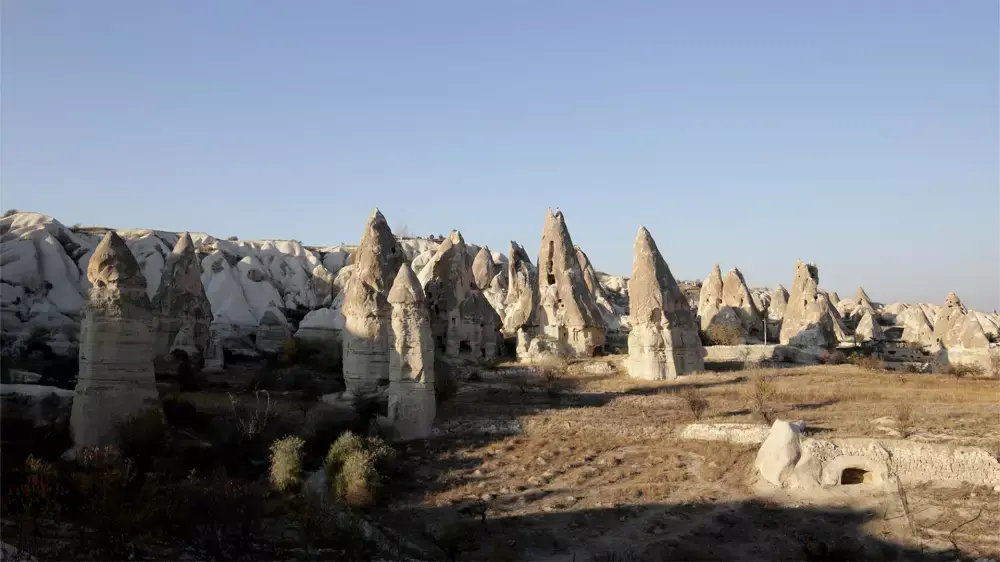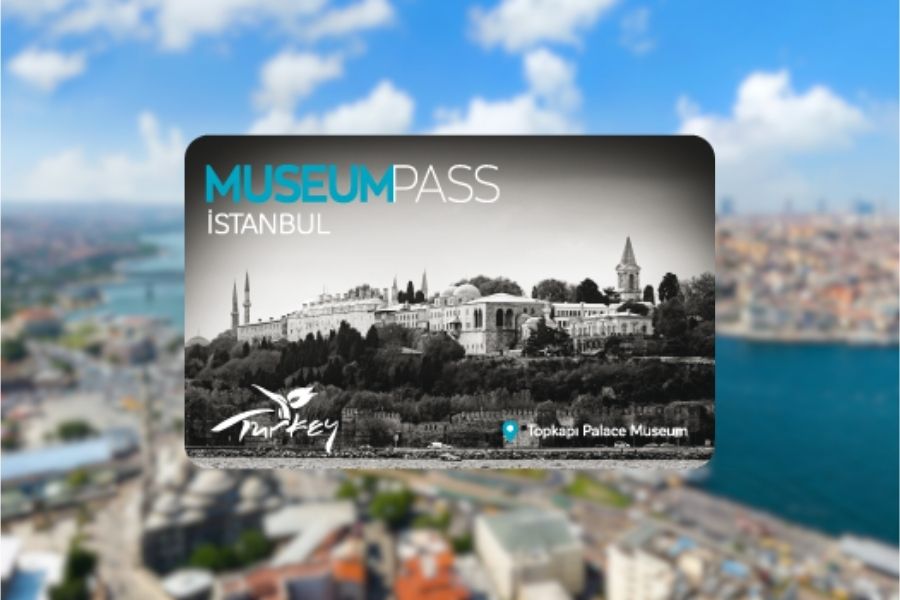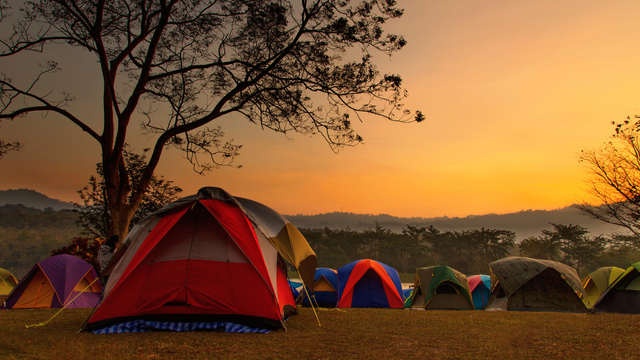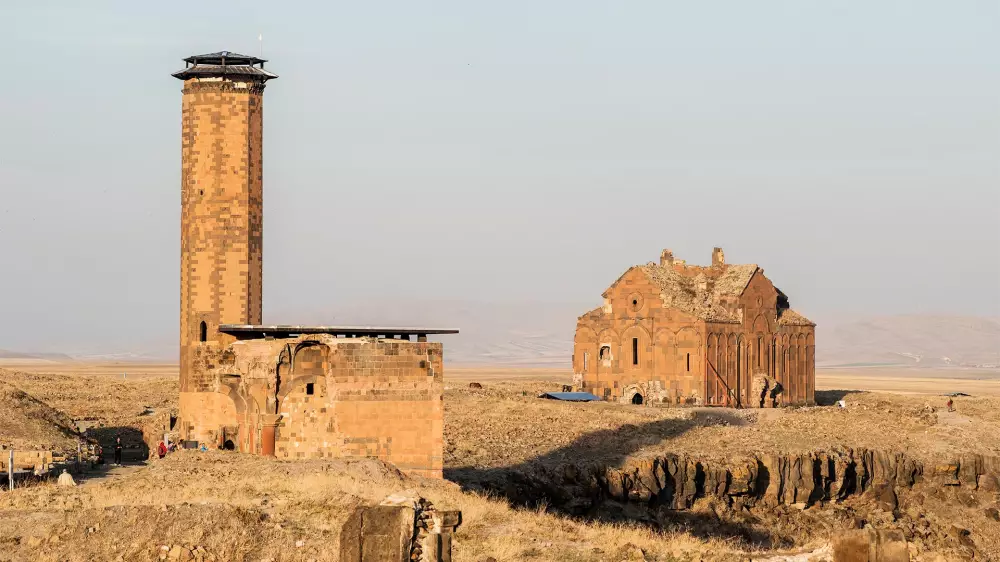
How Did the Fairy Chimneys, The Symbols of Nevşehir, Get Their Name?
Table Of Contents
The Fairy Chimneys, located in Nevşehir in Turkey's Central Anatolia Region, are a natural marvel considered one of the world's unique geological formations. Situated in the Cappadocia region, they are listed as a UNESCO World Heritage Site and attract numerous domestic and international tourists every year. These unique structures offer many intriguing aspects, from their formation and mystical legends to the activities available nearby and their historical significance. Here are the details:
What Are the Fairy Chimneys and How Did They Form?
The Fairy Chimneys were formed millions of years ago as a result of volcanic activity from the Erciyes, Hasan, and Güllü mountains, which spread layers of tuff and lava across the area. Over time, wind and water erosion shaped these tuff layers while the harder basalt layers remained intact, giving rise to the distinctive shapes of the Fairy Chimneys. These formations, most commonly found around Göreme, Ürgüp, and Avanos, lend a mystical atmosphere to the region.
The Origin of the Fairy Chimneys Legend
The legend behind the Fairy Chimneys involves a tale of giants and fairies. According to the story, giants once lived in this region and threw fireballs, endangering the people. A powerful ruler intervened with magical help, enabling the fairies to battle the giants and drive them away from the area. Afterward, a friendship developed between humans and fairies, and the region began to be known as "The Fairy Chimneys."
The Friendship Between Fairies and Humans
According to legend, once the giants were banished, a friendship blossomed between humans and fairies. While the fairies resided in chambers at the top of the rock formations, humans continued their lives underground. However, after a dispute, the fairies left the area, transforming into pigeons. Even today, the presence of pigeons around the Fairy Chimneys is seen as a continuation of this legend.
The Best Time to Visit the Fairy Chimneys
The best times to see the Fairy Chimneys are in spring and fall. During these seasons, the weather is ideal for hiking and nature exploration. Summer temperatures can be challenging for some visitors, while winter conditions, with snowfall and cold temperatures, can make travel more difficult.
Where Are the Fairy Chimneys Located?
The Fairy Chimneys are located in Nevşehir, particularly around Göreme, Ürgüp, Avanos, and Uçhisar. Göreme National Park and its surroundings offer some of the most picturesque views of the Fairy Chimneys, and they are about 10-30 kilometers from the city center of Nevşehir.
How to Get to the Fairy Chimneys
To reach the Fairy Chimneys, you first need to get to Nevşehir. You can travel to Nevşehir by bus or plane from major cities in Turkey. From Nevşehir Cappadocia Airport, you can rent a car or use tour services to reach the region.
Accommodation Options at the Fairy Chimneys
Cappadocia’s unique accommodation options include cave hotels, particularly around Göreme, Uçhisar, and Ürgüp, which provide a unique experience close to the Fairy Chimneys. There are also boutique hotels, guesthouses, and stone-built lodgings to choose from.
Entrance Fees for the Fairy Chimneys
Some areas within Göreme National Park require an entrance fee, while different valleys may have free access. It’s recommended to check official sources for the latest fees before visiting.
The Historical Significance of the Fairy Chimneys
During the early Christian period, Cappadocia was an important religious center, with churches and monasteries carved into the rocks. The frescoes in the Göreme Open Air Museum reflect the religious and cultural history of the region.
Are Cappadocia and the Fairy Chimneys the Same?
Cappadocia refers to a vast geographic area that includes the Fairy Chimneys. While the Fairy Chimneys are one of the region's most famous natural formations, Cappadocia encompasses a variety of tourist attractions, including valleys, underground cities, and historical structures.
The Three Graces Legend of the Fairy Chimneys
The Three Graces is one of Cappadocia's most photographed and iconic spots. Legend has it that the three fairy chimneys in varying sizes represent a small family. According to one version of the tale, a king’s daughter fell in love with a shepherd and married him despite royal traditions. They had a child, but when her father approached to see his grandchild, soldiers were sent to capture them. Praying to be saved from the king’s wrath, the princess, her husband, and child were turned into stone. Today, these three fairy chimneys are believed to represent the family and are seen as a sacred place where childless families come to make wishes.
What Is Being Done to Protect the Fairy Chimneys?
The Fairy Chimneys and surrounding areas are protected as part of the UNESCO World Heritage List. Efforts are in place to preserve the natural and cultural values, and activities that may harm the area are restricted. Visitors are encouraged to be environmentally conscious during their visit.
Local Cuisine to Try Around the Fairy Chimneys
Cappadocia’s culinary culture is as rich as its historical and natural beauty. Here are some local dishes visitors should try:
- Testi Kebab: A Cappadocian specialty, testi kebab is a delicious meat dish cooked in a unique pottery jar.
- Saç Tava: Made with fresh meat and vegetables, saç tava offers a quick yet tasty dinner option.
- Manti: Cappadocia-style dumplings, known for their unique cooking and presentation style.
- Pumpkin Seeds: A popular local snack, pumpkin seeds from Nevşehir are enjoyed by many visitors.
- Ürgüp Wine: Thanks to its wine-making traditions, Nevşehir is famous for its quality wines.
- Dried Cream (Kuru Kaymak): Often served at local breakfasts, kuru kaymak is a must-try delicacy in Cappadocia.
With this comprehensive guide, you can gain in-depth knowledge about the Fairy Chimneys’ history, natural beauty, and cultural wealth, and get ideas on activities to enjoy and flavors to experience during your visit.
4o



